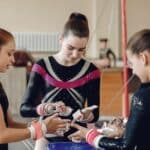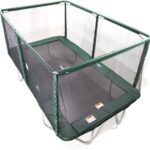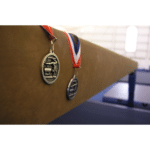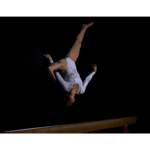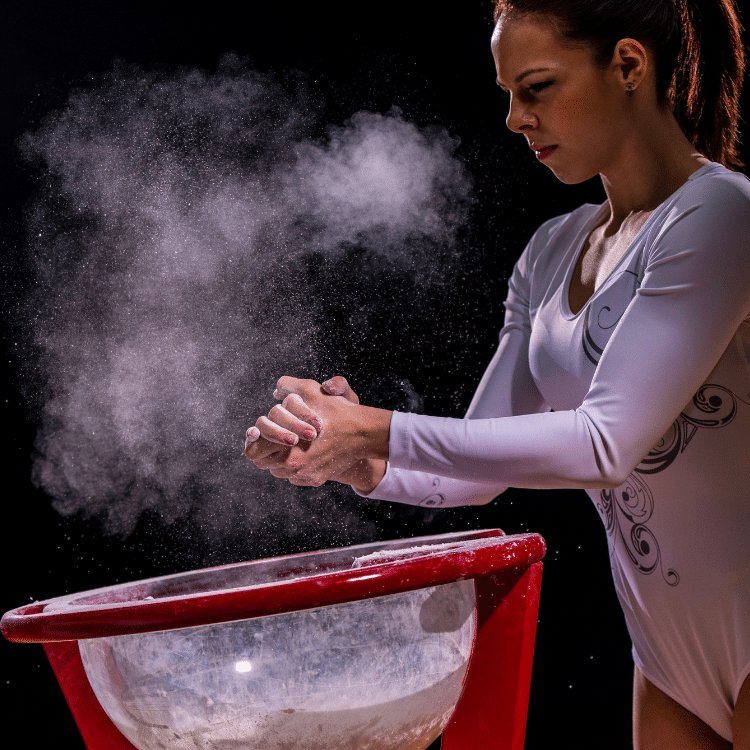
Carefully placed chalk bowls at gymnastics training sessions and competitions are a familiar sight, but have you ever wondered why do gymnasts use chalk? Chalk can be messy and has a distinct smell that most gymnasts will recognize, so why would a gymnast want to use it?
In this article, we dive into why gymnasts quickly get used to using chalk and how it helps them.
Let’s get started!
Table of Contents
- Why do gymnasts use chalk?
- What is gymnastics chalk made from?
- Is gymnastics chalk the same as normal chalk?
- Why do gymnasts powder their legs?
- Why do gymnasts chalk the beam?
- What do gymnasts spray on the bars?
- Are there alternatives to gymnastics chalk?
Why do gymnasts use chalk?
Gymnasts use chalk to combat the effect of sweaty hands. This is especially important when a gymnast is using apparatus such as the bars and rings as sweaty hands will increase the chance of gymnast losing their grip.
Gymnasts also use chalk as it increases the friction between hands and apparatus. This sounds counterproductive but too much friction will rip gymnasts’ hands as they swing.
The chalk works by absorbing the moisture on the hands and helps the gymnasts to stay on the equipment which, as gymnasts know already, is not always easy. Gymnastics is a sport that pushes athletes to the limit both physically and mentally. With the added pressure of competition, gymnasts can become sweaty very quickly!
Without chalk, there would be a huge increase in falls and slips.
What is gymnastics chalk made from?
Gymnastics chalk is made from Magnesium Carbonate (MgCO3). It can be used in three different forms:
Powder
The powder is probably the most familiar type of gymnastics chalk but it is also the messiest because it is loose. This means when gymnasts apply it to their hands they will need to brush excess chalk off and it quickly fills the air and gets into eyes and hair! Lots of gyms now ban powder chalk because of the mess it can make.

To help reduce the mess of powder chalk, many gymnasts now use small ball socks which are filled with chalk. The fabric is porous so small amounts of chalk will come out of the sock but they are much cleaner than simply having a big bowl of chalk. Most socks are refillable and can be opened and closed using a drawstring.
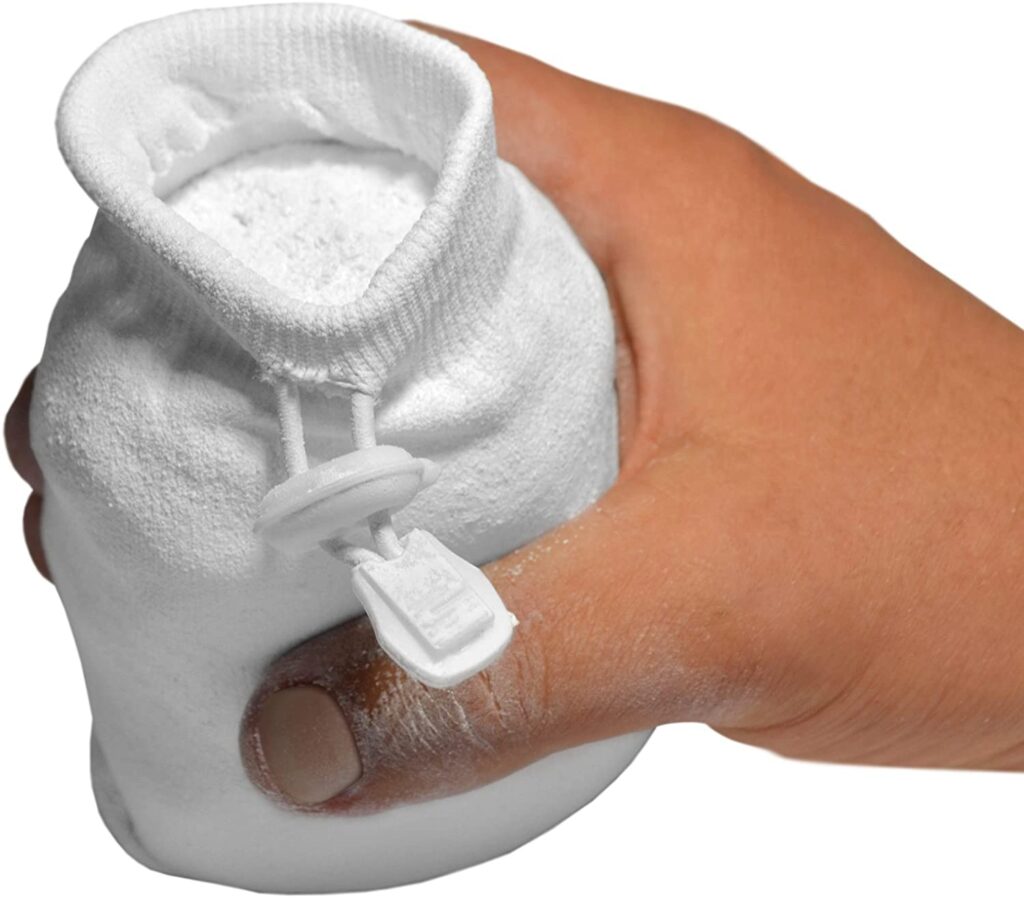
Solid Block
Blocks of chalk break down into powder fairly quickly. They are slightly less messy than bags of loose chalk but you will still need a chalk bowl or bucket.
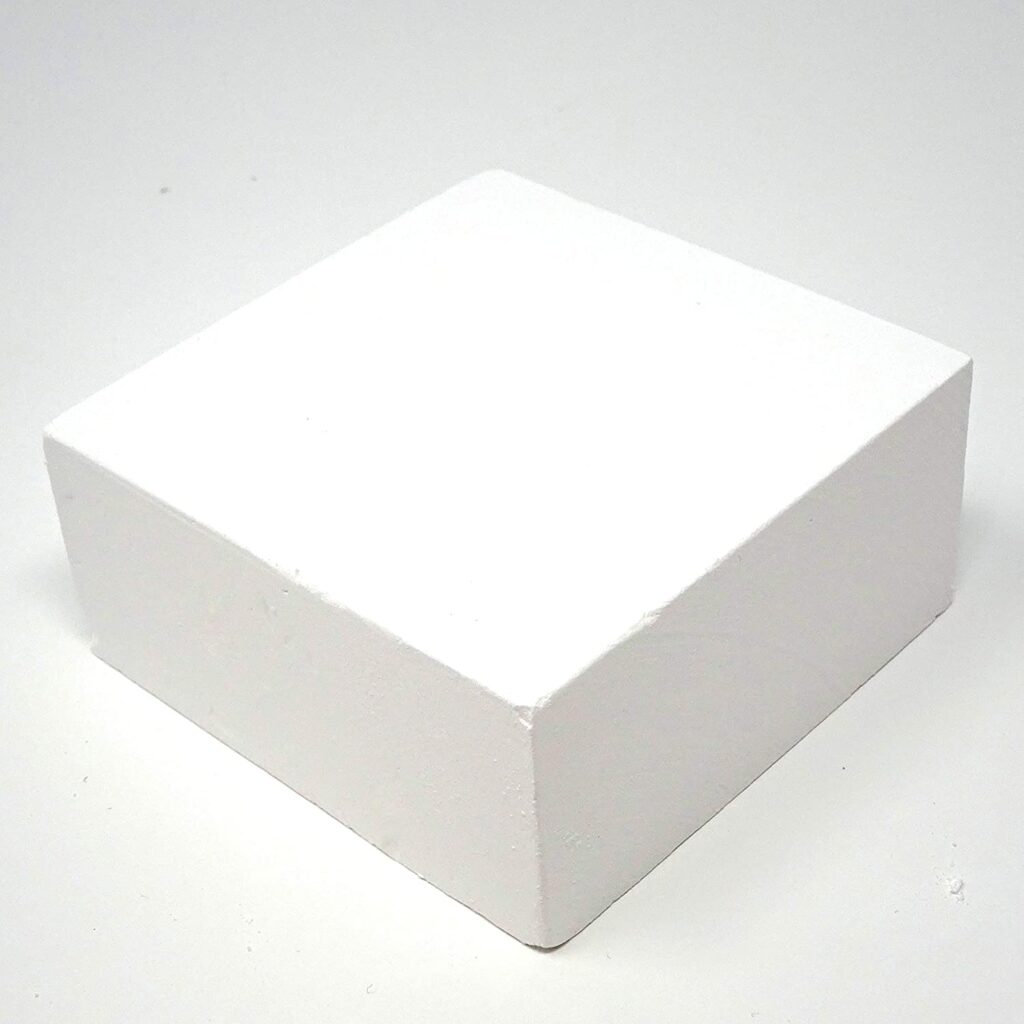
Liquid Spray Chalk
Liquid chalk is the least messy type of gymnastics chalk. Once it is sprayed onto the hands it becomes solid within a few seconds and covers the hands really well. To remove the chalk a gymnast simply needs to wash their hands with soap at the end of a session. The advantage of liquid chalk is that there is no need for a chalk bowl or bucket. The gymnast simply carries their bottle with them into the gym.

Is gymnastics chalk the same as normal chalk?
No, most other chalks such as those used in classrooms are made from Calcium Sulphate (CaSO4). If you are thinking of using classroom chalk as an alternative, then please don’t as it will not absorb moisture or reduce friction in the same way that Magnesium Carbonate does.
Why do gymnasts powder their legs?
Gymnasts sometimes powder their legs to help them grip during somersaults and other tumbles. As the gymnast flips, they often close their body into a tucked or picked shape which requires them to hold onto their legs with their hands. Some will grab the front of the legs by the shins, others will grab behind the back of the thighs.
Because the legs also get sweaty, a bit of chalk will absorb the sweat and reduce the chances of letting go by mistake. The gravitational forces at work during a somersault are extreme so grabbing the legs safely is super important to help a gymnast land on their feet correctly.
Male gymnasts often apply chalk underneath their armpits when they use the Parallel Bars as they can swing on the bars with their upper arms on the bars.
Tumblers sometimes chalk their feet by stepping onto a chalk tray. The idea is exactly the same – they are trying to absorb the sweat underneath the feet and improve the grip of their feet when they land on the tumble track.
Why do gymnasts chalk the beam?
Technically gymnasts are not allowed to put excessive amounts of chalk onto the beam as it can make the beam slippery. Unlike the wooden Uneven Bars and Rings or the metal High Bar, a beam is covered with suede material and the chalk doesn’t have the same grippy effect. However, some gymnasts still like to chalk their feet before getting onto the beam.
Others will use chalk to mark out specific points on the beam to help them know where to perform certain parts of the routine.
What do gymnasts spray on the bars?
Gymnasts spray water to make the bars stickier which combined with chalk helps with grip.
Different gymnasts have slightly different variations on what they add to the water. Some will add resin, sugar or molasses to help make the water stickier.
At competitions, the FIG (Federation of International Gymnastics) allows for the apparatus to be sprayed but gymnasts are required to clean up after they complete a routine. Any sticky mess left for the next gymnast is frowned upon and penalty points can be deducted from a gymnast’s score.
Are there alternatives to gymnastics chalk?
There are no specific alternatives to gymnastics chalk however, gymnasts have been very creative in combining other products with the chalk to enhance its stickiness.
Syrup or honey are two examples of creative combinations. Beer has also been known to work well, though it is usually found in a different type of bar!
Trent Wells the retired USA gymnast allegedly used melted gummy bears!
Away from competitions, gymnasts will be back at their own gymnastics training facilities where coaches can experiment further without risking breaking any competition rules. Examples of coaches using products to improve the grip on bars include coke (it opens up the grains of the wooden bars and allows the chalk to stick to the bar for longer).
Coaches will also sand or velcro down areas of the bar that need more chalk to embed into the wood.
Latest Posts
- A Complete Guide to Gymnastics RipsAre you tired of dealing with painful gymnastics rips on your hands from training? Look no further – this article offers… Read more: A Complete Guide to Gymnastics Rips
- The 12 Types of Trampoline (explained)Trampolines, a staple of joy and fitness, cater to all ages, inspiring kids and adults alike to leap out of their… Read more: The 12 Types of Trampoline (explained)
- How is Gymnastics Scored? (answered)In the world of gymnastics, every flip, spin, and leap is a blend of athleticism, precision, and artistry. But how is… Read more: How is Gymnastics Scored? (answered)
- Level 5 Gymnastics Skills (Guide)This guide delves deep into the Level 5 gymnastics skills, providing insights, breakdowns, and an expert perspective on each skill and… Read more: Level 5 Gymnastics Skills (Guide)
- Level 4 Gymnastics Skills (Guide)In this comprehensive guide, we’ll delve into the details of the Level 4 gymnastics skills, breaking down each requirement for a… Read more: Level 4 Gymnastics Skills (Guide)
- Level 3 Gymnastics SkillsLevel 3 is defined as a development level by USAG meaning not all clubs or gymnasts will compete these skills at… Read more: Level 3 Gymnastics Skills

